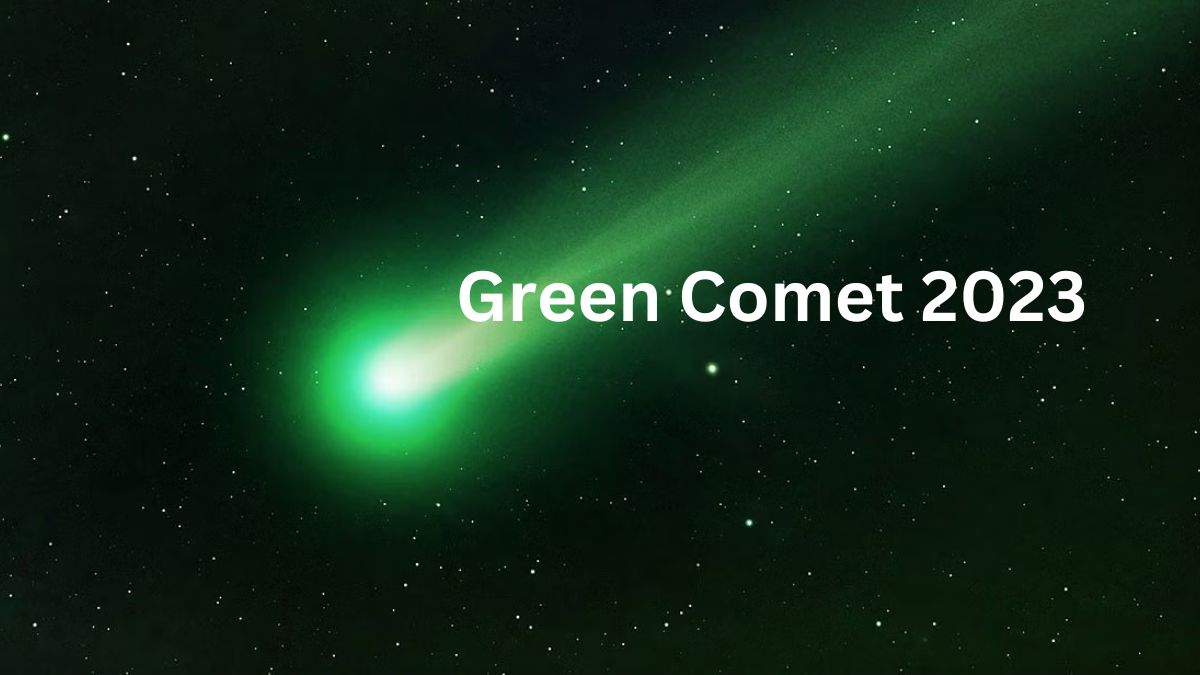Skywatchers and astronomers alike have long been fascinated by what’s happening out there in the cosmos. The arrival of the “Green Comet” in the year 2023 is one such event that is expected to astonish and astound. The Green Comet of 2023 continues the longstanding association of comets with enigma and awe. This article will explain what a comet is, why this one is green, and how you may go about catching a glimpse of this celestial event.
What Are Comets?
Let’s take a step back and learn about comets in general before diving into the intricacies of the Green Comet of 2023. Comets are icy, dusty, and gaseous asteroids with very extended orbits around the Sun. The comet’s ices are vaporized by the Sun’s radiation as it approaches, releasing gas and particles into space. During this process, the comet’s head, or coma, becomes brilliant and luminous, and the comet’s tail, which may stretch for millions of kilometers, can become spectacular.
“Dirty snowballs” is a common nickname for comets due to their ice and dusty makeup. As relics of the early Solar System, they reveal important information about the environment and materials of that time.
The Green Comet Phenomenon
The Green Comet of 2023 gets its moniker from the attention it has garnered from its unusual green tint. This comet is green, but why?
The Role of Gases
The gas molecules in the comet’s coma are responsible for its greenish color. Comets include gases like cyanogen (CN) and diatomic carbon (C2). When these gases are subjected to the UV radiation from the Sun, a process known as fluorescence occurs, resulting in the emission of green light. It is because of this brightness that the comet appears green.
Molecular Makeup
Carbon (C) and nitrogen (N) make up cyanogen, a vital pigment responsible for the green color. When these molecules, which were ionized by the sun’s rays, revert to their ground state, a green light is produced. The precise shade of green might vary depending on a variety of factors, including the amount of cyanogen present.
Previous Green Comets
Green comets may be uncommon, but they are not unprecedented. Comet Hyakutake, which appeared in 1996, was one of the most well-known green comets due to its strikingly green coma and tail. In 2020, comet NEOWISE exhibited a very little greenish tint.
Viewing the Green Comet of 2023
During specific points in the Green Comet of 2023’s orbit around the sun, it is predicted to be visible to skywatchers in the Northern Hemisphere. Here are some things to keep in mind and do if you want to see this heavenly show:
Timing Is Key
Comets’ apparent sizes and brightnesses shift over time as they orbit the Sun. At perihelion, the Green Comet of 2023 will be nearest the Sun and hence brightest in the sky. At this time, the comet will be closest to the Sun and its coma and tail will glow brightest.
Use Binoculars or a Telescope
Comets may sometimes be seen with the naked eye, but observing them using binoculars or a telescope is far better. You can see more of the comet’s coma and tail with these optical aids than you could without them.
Find a Dark Sky Location
It might be difficult to make out faint or distant celestial objects due to the light pollution present in metropolitan areas. Traveling to a rural region or certified dark sky site will allow you to see the Green Comet of 2023 more clearly than if you were in a city.
Patience and Persistence
Comet watching may be an exercise in patience. They aren’t always going to shine brightly enough or be noticeable straight away. Constantly checking the comet’s location updates and being ready to observe for a while is a must.
Safety First
Always remember to shield your eyes from the Sun’s damaging UV rays when looking up at the Green Comet of 2023 or any other astronomical object. Never, ever, without special solar filters, point your binoculars or telescope at the Sun.
Scientific Value
Comets like the Green Comet of 2023 are fascinating scientifically, and not just because of their eye-popping appearance. They shed light on the makeup of the early solar system and other heavenly bodies. Scientists can learn more about the conditions under which the solar system began by analyzing the gases and dust released by comets.
Spacecraft have been landed on comets as part of cometary missions like the European Space Agency’s Rosetta project to learn more about their composition up close and personal. Comets may have had a role in the origin of life on Earth because they brought water and complex chemical compounds. These missions provided crucial information on the organic molecules present on comets.
A Celestial Reminder
The Green Comet of 2023 is a cosmic reminder of the vastness and beauty of our universe. Comets have fascinated humans for ages, and many cultures view them as omens or messengers from the gods. They still have the power to amaze and intrigue us today, serving as a constant reminder of the infinite variety and wonder of the cosmos.
Keep an eye on the latest information from scientists and observatories as you get set to watch this celestial spectacle. Comet visibility and brightness might vary as they travel across the galaxy. The Green Comet of 2023 provides a stunning chance for people of all backgrounds and experience levels to feel a part of the galaxy and to ponder the secrets of our solar system. Put it in your calendars, get your telescopes ready, and get ready to see the green beauty that will soon be lighting up the night sky.
READ ALSO: Kylie Jenner and Timothée Chalamet: A Glimpse into Their Iconic Journeys











